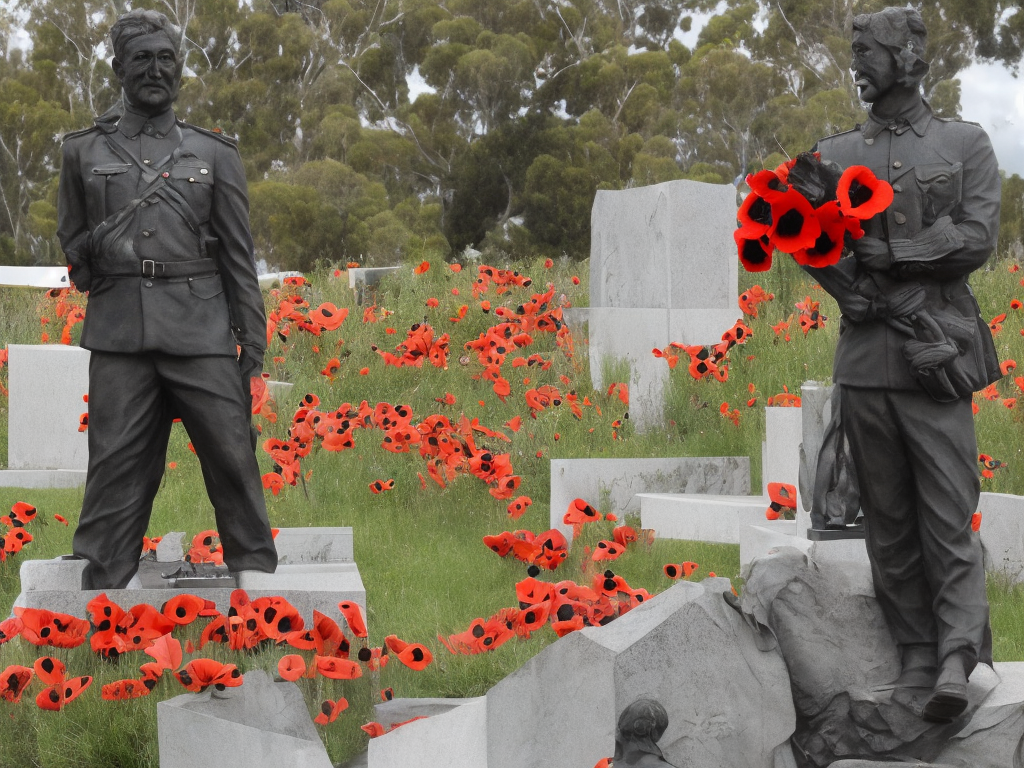
Anzac Day and Remembrance Day are two important days of remembrance and commemoration in Australia and other Commonwealth countries. Though they share similar themes of honouring and remembering soldiers who have served and died, there are some crucial differences between the two.
Anzac Day, commemorated on April 25th each year, is a day of remembrance for those who have lost their lives in war, specifically in honour of the soldiers of the Australian and New Zealand Army Corps (ANZAC) who fought in Gallipoli during World War I. The ANZACs played an important role in the Gallipoli Campaign, symbolising the bravery, discipline and endurance of the Australian and New Zealand soldiers in the face of terrible conditions. This day was first commemorated in 1916, and has since become an important national day of solemn remembrance, marked by services, ceremonies and parades.
Remembrance Day, on the other hand, is a day of commemoration that honours those who have served and died in conflicts worldwide. It marks the anniversary of the end of the First World War, November 11th 1918, when the Armistice was signed between the Germans and Allies, formally ending hostilities on the Western Front. Originally called Armistice Day, it was renamed Remembrance Day after World War II and is now recognised as a day of remembrance for all wars, conflicts and peacekeeping missions. Remembrance Day is marked by a moment of silence at 11am to remember all the fallen soldiers.
One of the key differences between Anzac Day and Remembrance Day is the particular focus of each day. While Anzac Day is chiefly focused on wartime service in Gallipoli, Remembrance Day aims to commemorate all Australian soldiers who have served and died in times of war. Though both days serve a similar purpose in terms of honouring the sacrifices of servicemen and women, the specificity of focus for Anzac Day gives it a more distinct national flavour.
Another key difference is the tone of the two events. Anzac Day is a more sombre and reflective day of commemoration, with an emphasis on mourning and remembrance. This is expressed through the playing of the Last Post, a military bugle call that signifies the passing of the soldier, as well as through the laying of wreaths, the recitation of poems and the reading of personal accounts of wartime experiences. In contrast, Remembrance Day is generally regarded as a more positive and celebratory day, where the focus is on the sacrifices that have enabled the preservation of peace.
While both Anzac Day and Remembrance Day are special days of commemoration and reflection, they are also important for different reasons. Anzac Day allows Australians to remember and appreciate the sacrifices of the ANZACs, and to acknowledge the spirit of the Australian soldier that was forged in the hardships of Gallipoli. On the other hand, Remembrance Day honours all those Australian soldiers who have served and died in times of conflict, regardless of their individual locations or campaigns. Both days serve to bring together communities and nations in a spirit of respect and gratitude.
In terms of the symbols associated with each day, Anzac Day is linked with the red poppy, which is worn as a symbol of remembrance and respect, whereas Remembrance Day is associated with the red poppy as well as the Kangaroo Paw or Wattle, which are also used to represent the sacrifices of Australian soldiers. The poppy has its origins in the poem ‘In Flanders Fields’, written by a Canadian soldier in 1915, which describes the fields of poppies that grew in the areas where the fallen soldiers lay buried. The Kangaroo Paw and Wattle are native Australian flowers and have also come to represent the resilience and loyalty of Australian soldiers.
In conclusion, while Anzac Day and Remembrance Day share some elements of commemoration, they are two distinct events that are celebrated for different reasons. Anzac Day focuses on the Gallipoli campaign and the ANZAC spirit, while Remembrance Day honours all Australian soldiers who have served and died in times of conflict. While both of these days are solemn and reflective in their tone, the celebrations on Anzac Day are more specific to the national spirit of Australia and New Zealand, while Remembrance Day has a more universal message of respect and gratitude for all those who served in conflicts around the world. Regardless of their differences, both days serve to unite communities and remind us of the sacrifices made by soldiers in the pursuit of peace.
 Self-Instruct
Self-Instruct